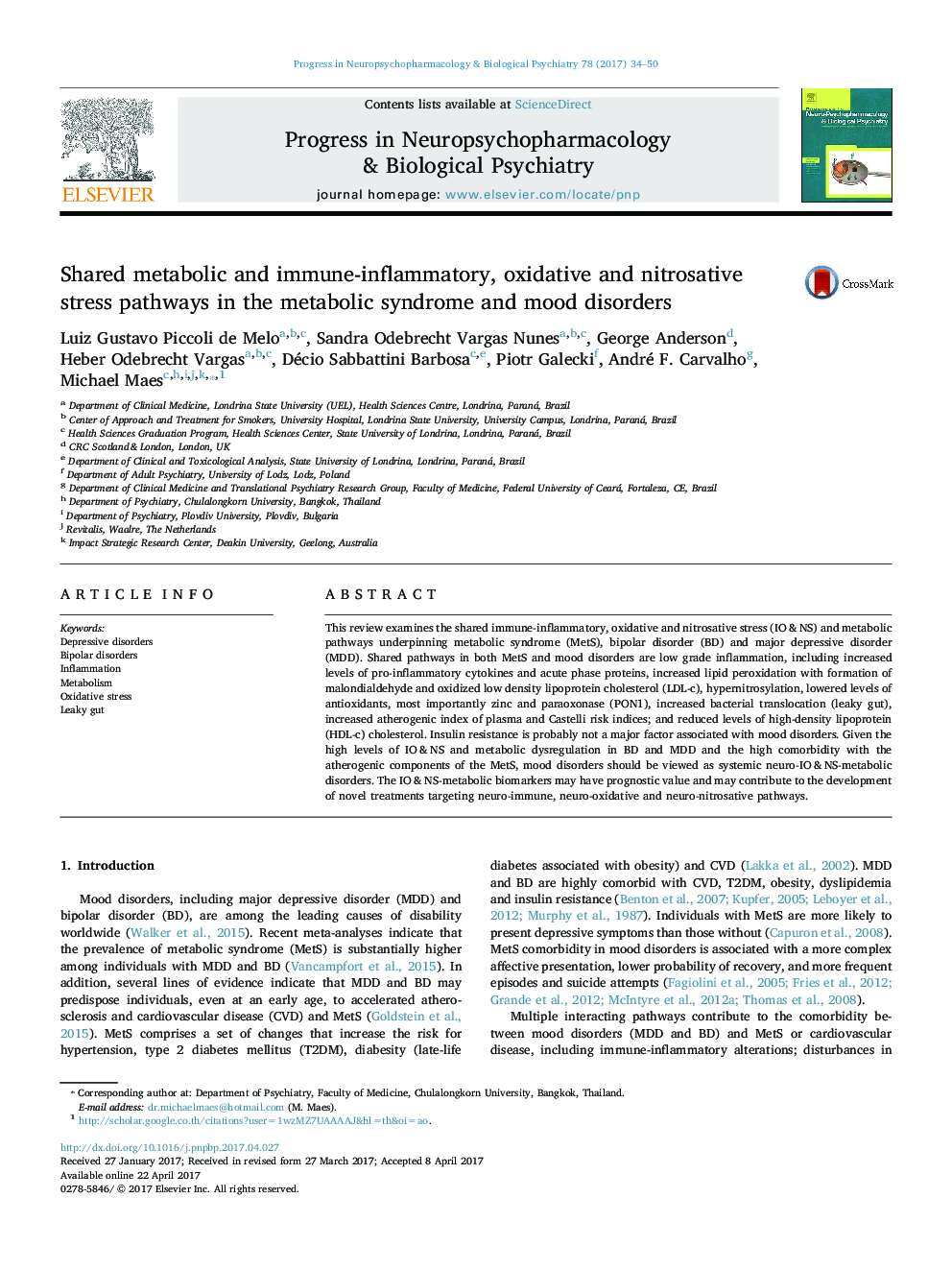| Article ID | Journal | Published Year | Pages | File Type |
|---|---|---|---|---|
| 5558035 | Progress in Neuro-Psychopharmacology and Biological Psychiatry | 2017 | 17 Pages |
â¢Mood disorders are highly comorbid with the metabolic syndrome (MetS).â¢Immune and metabolic pathways in MetS are associated with mood disorders.â¢Increased atherogenicity, but not insulin resistance, is strongly associated with mood disorders.â¢The immune-metabolic biomarkers are new drug targets in comorbid MetS and mood disorders.
This review examines the shared immune-inflammatory, oxidative and nitrosative stress (IO&NS) and metabolic pathways underpinning metabolic syndrome (MetS), bipolar disorder (BD) and major depressive disorder (MDD). Shared pathways in both MetS and mood disorders are low grade inflammation, including increased levels of pro-inflammatory cytokines and acute phase proteins, increased lipid peroxidation with formation of malondialdehyde and oxidized low density lipoprotein cholesterol (LDL-c), hypernitrosylation, lowered levels of antioxidants, most importantly zinc and paraoxonase (PON1), increased bacterial translocation (leaky gut), increased atherogenic index of plasma and Castelli risk indices; and reduced levels of high-density lipoprotein (HDL-c) cholesterol. Insulin resistance is probably not a major factor associated with mood disorders. Given the high levels of IO&NS and metabolic dysregulation in BD and MDD and the high comorbidity with the atherogenic components of the MetS, mood disorders should be viewed as systemic neuro-IO&NS-metabolic disorders. The IO&NS-metabolic biomarkers may have prognostic value and may contribute to the development of novel treatments targeting neuro-immune, neuro-oxidative and neuro-nitrosative pathways.
